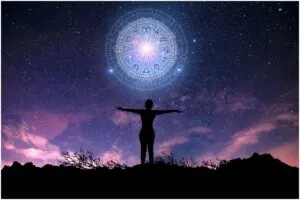Who is the Bodhisattva Kuan Yin?
Kuan Yin is one of the most venerated deities in the Buddhist tradition. Additionally, she holds a special place in the hearts of people of other faiths, including Confucianists and Daoists.
Moreover, Guanyin is worshiped in the Shaolin as well as in other famous temples dedicated to her, like Shitennoji, Sensoji, Ajanta Caves, Mahabodhi, and many other temples in Sri Lanka, India, Japan, and Tibet.
The name translates as “[The One Who] Perceives the Sounds of the World.”
Otherwise called Guanyin, Quan’Am (Vietnam), Kannon (Japan), typically portrayed, Quan Yin, and Kanin (Bali), She is the embodiment of compassionate, loving-kindness.
In Japanese Buddhism, the Bodhisattva name is pronounced Kan’on (Kannon) or, more formally, Kanzeon.
As the Bodhisattva of Compassion, She hears the cries of all beings. It is believed that the Bodhisattva commonly appears in the sky to save those who call upon Her when in danger.
Additionally, Guanyin’s virtue and power are manifest in Her capacity to bring boundless compassion and love to all sentient beings.
Quan Yin enjoys a strong resonance with the Mother of Jesus, Christian Mary, and the Tibetan goddess Tara. It is commonly accepted among East Asian adherents that Guanyin originated as the “Lord who looks down” – Avalokitesvara.
Generally known in English as the Mercy Goddess or Goddess of Mercy, Quan Yin is also revered by Taoists as an immortal. In Chinese folk religion, there are legendary accounts about the Quan Yin’s origins that are not associated with the Avalokitesvara described in Buddhist sutras.
Iconography
In China, Quan Yin is generally portrayed as a young woman donned in a flowing white robe and normally wearing necklaces symbolic of Indian or Chinese royalty.
In her left hand is a pot containing pure water, and the right holds a willow branch. The crown usually depicts the image of Amitabha.
In some Buddhist temples and monasteries, Quan Yin’s image is occasionally that of a youthful man dressed in Northern Song Buddhist robes and seated gracefully.
He is typically portrayed looking or glancing down, symbolizing that typically portrayed continues to watch over the world.
Occasionally, she takes the form of a warrior armed with numerous weapons, embodying the fierce and powerful aspect of compassion committed to eradicating the true causes of suffering.
Goddess of Compassion – Legend
One Buddhist legend from the Complete Tale of Gwun Yam and the Southern Seas presents Gwun Yam as vowing to never rest until She had freed all sentient beings from samsara or reincarnation.
Despite strenuous effort, she understood that there were still many unhappy beings yet to be saved. After striving to comprehend the needs of so many, her head split into 11 pieces.
The Buddha Amitabha (a celestial buddha according to the scriptures of Mahayana Buddhism), upon seeing her plight, gave her 11 heads to help her hear the cries of those who are suffering.
Upon hearing these cries and understanding them, Avalokitesvara attempted to reach out to all those who needed aid but found that Her 2 arms shattered into pieces. Once more, Amitabha came to her aid and appointed Her 1000 arms to let her reach out to those in need.
Many Himalayan versions of the tale include 8 arms with which Avalokitesvara skillfully upholds the dharma, each possessing its own specific implement, while more Chinese-specific versions give varying accounts of this number.
Kuan Yin Mantra Meaning
- Namo (Sanskrit) means ”homage to” or ”refuge in”;
- Guan (Chinese) means ”observe” or ”care”;
- Shi (Chinese) means ”world”;
- Yin (Chinese) means ”sound” or ”voice”;
- Pusa (Sanskrit) means ”Bodhisattva” – a being with great compassion and wisdom.
Namo Guan Shi Yin Pusa – Quan Yin Mantra Benefits:
Chanting Guan Yin mantra, we open our hearts, change our frequency, and provide affection, love, and compassion to those around us.
Practicing this daily brings true spiritual healing and transmutation to resolve personal problems and overcome negative habits.
When you chant this mantra, don’t expect to get anything.
Just recite and open yourself to the energy.
Listen to more healing mantras on insightstate, like Om Vasudhare Svaha mantra.
Featured image credit – @Getty
References https://www.thelancet.com/journals/lancet/article/PIIS0140-6736(05)67718-5/abstract https://www.ncbi.nlm.nih.gov/pmc/articles/PMC3807963/ https://www.ncbi.nlm.nih.gov/pubmed/26221571
- About the Author
- Latest Posts
As a founder and chief author at InsightState.com, Bulgarea Candin helps readers on their spiritual journeys. His writings are designed to inspire creativity and personal growth, guiding readers on their journey to a more fulfilled and enlightened life.


